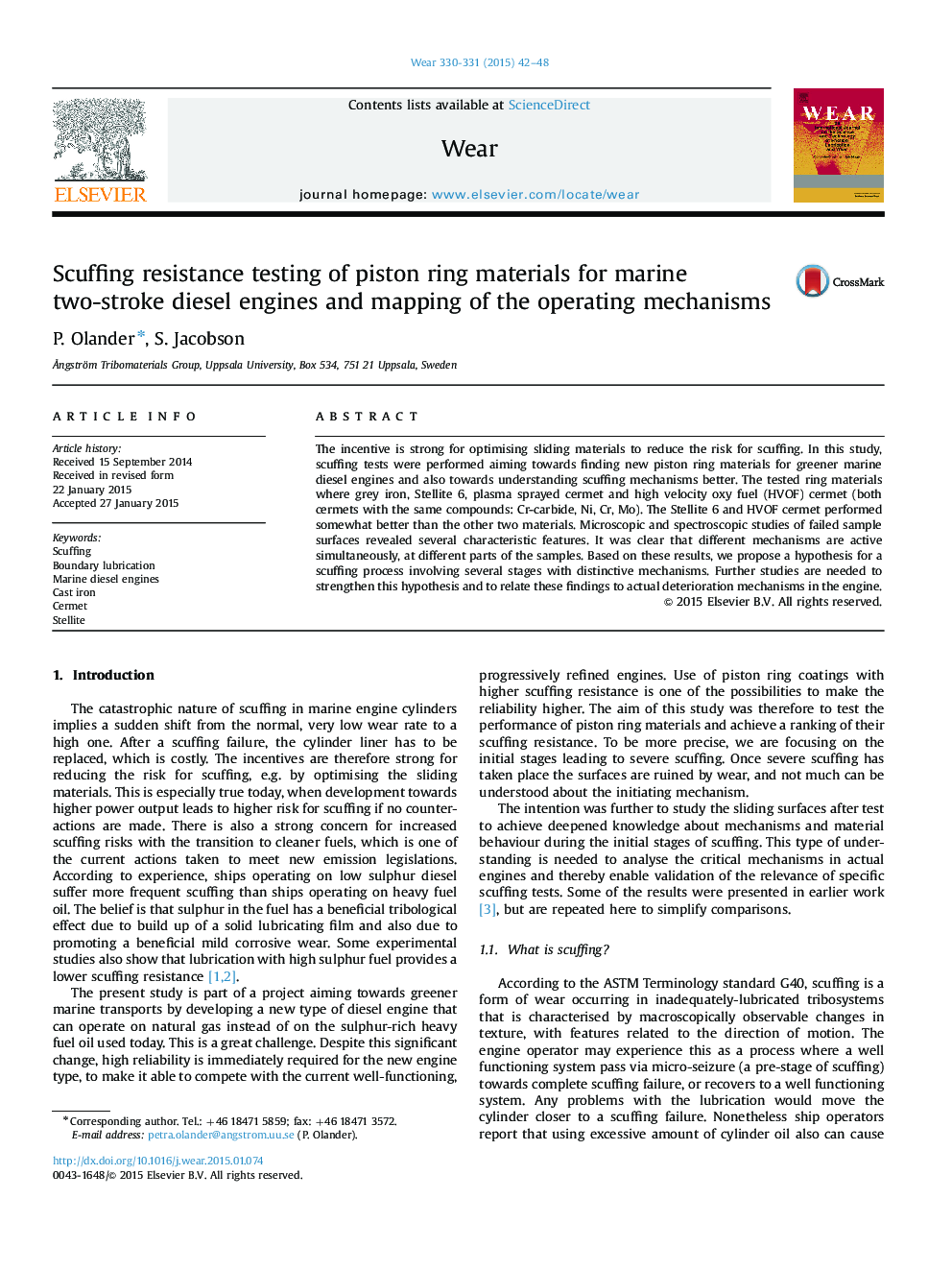| Article ID | Journal | Published Year | Pages | File Type |
|---|---|---|---|---|
| 7004277 | Wear | 2015 | 7 Pages |
Abstract
The incentive is strong for optimising sliding materials to reduce the risk for scuffing. In this study, scuffing tests were performed aiming towards finding new piston ring materials for greener marine diesel engines and also towards understanding scuffing mechanisms better. The tested ring materials where grey iron, Stellite 6, plasma sprayed cermet and high velocity oxy fuel (HVOF) cermet (both cermets with the same compounds: Cr-carbide, Ni, Cr, Mo). The Stellite 6 and HVOF cermet performed somewhat better than the other two materials. Microscopic and spectroscopic studies of failed sample surfaces revealed several characteristic features. It was clear that different mechanisms are active simultaneously, at different parts of the samples. Based on these results, we propose a hypothesis for a scuffing process involving several stages with distinctive mechanisms. Further studies are needed to strengthen this hypothesis and to relate these findings to actual deterioration mechanisms in the engine.
Related Topics
Physical Sciences and Engineering
Chemical Engineering
Colloid and Surface Chemistry
Authors
P. Olander, S. Jacobson,
